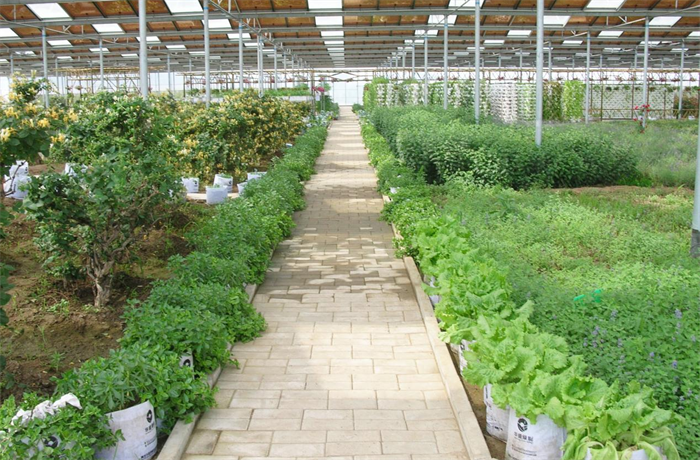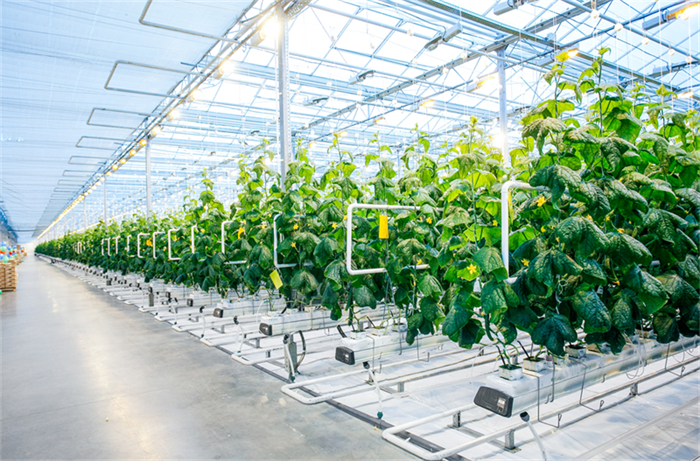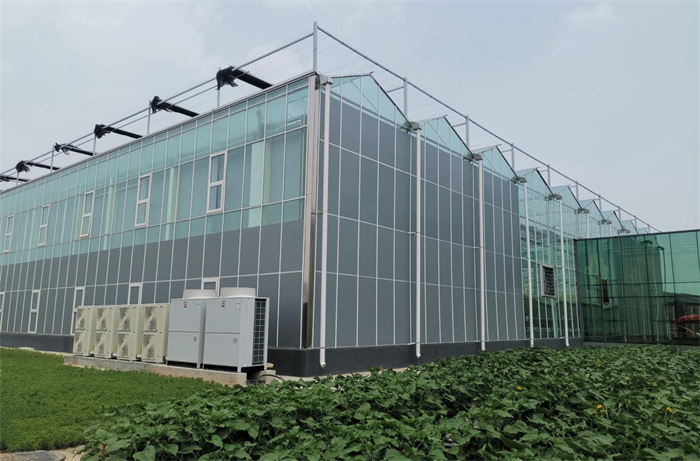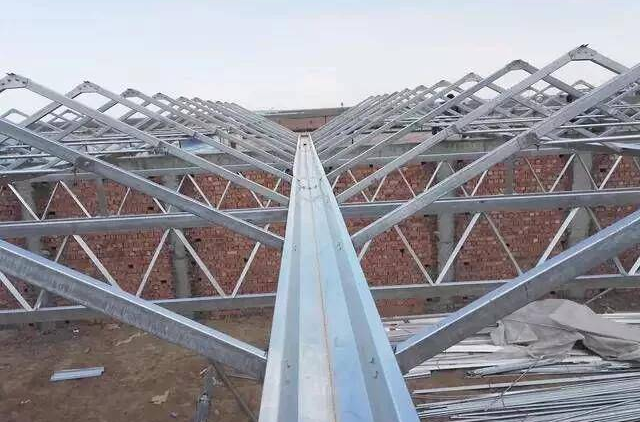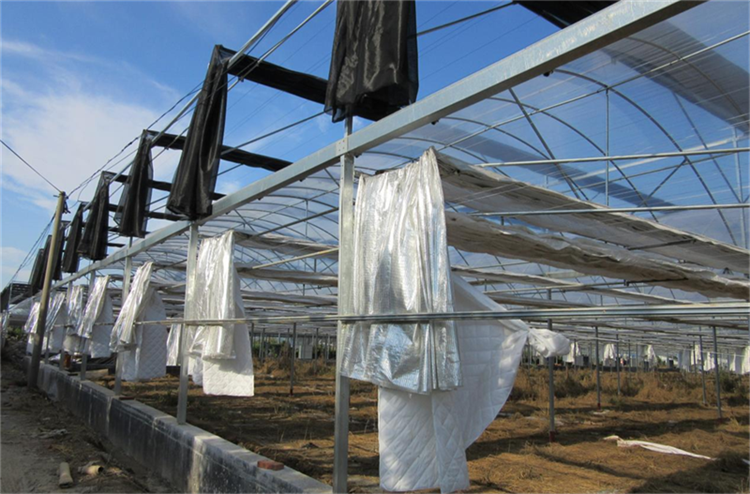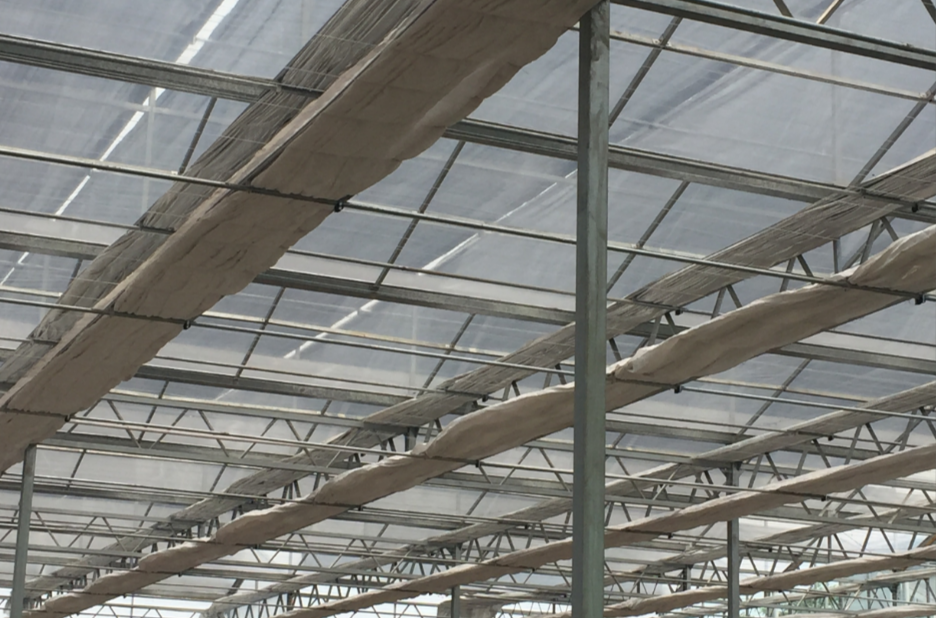Many of our dresses feature beautiful beading on the sleeves
Glass greenhouse:Agreenhouse with glass as the main light-transmitting covering material is a glass greenhouse. High light transmittance, very suitable for growing high-light crops. A greenhouse covered with single-layer glass is called a single-layer glass greenhouse, and a greenhouse covered with double-layer glass is called a double-layer insulating glass greenhouse. Ordinary glass used in architectural glass greenhouses is generally float flat glass, usually available in two specifications: 4mm and 5mm thick. 4mm thick glass is commonly used in Europe and the United States, while 5mm thick glass is used in hail-prone areas.
PC board greenhouse:greenhouse whose covering material is a polycarbonate hollow board is called a PC board greenhouse. Its characteristics are: light structure, anti-condensation, good lighting, good load-bearing performance, excellent thermal insulation performance, strong impact resistance, durability and beautiful appearance. However, its light transmittance is still slightly lower than that of glass greenhouses, and its cost is higher.
Plastic film greenhouse:greenhouse whose covering material is made of plastic film is called a film greenhouse and has lower cost. The initial investment of the project is small. However, due to film aging and other reasons, there is a problem of regular film replacement, so there will be continued investment in the future. Areas with colder climates mostly use double-layer inflatable films, with a light transmittance (double layer) of about 75%; areas with mild climates mostly use single-layer films, with a light transmittance (single layer) of about 80%.
Solar greenhouse:Solar greenhouse is a type of greenhouse classified according to whether it has greenhouse heating equipment, that is, it does not heat the greenhouse. Mainly relying on the natural warmth of sunlight and insulation equipment to maintain indoor temperature at night. Generally, relatively simple facilities are used to make full use of solar energy. In cold areas, vegetables are generally grown over the winter without heating. However, solar greenhouses, which are cultivation facilities for producing fresh vegetables, have their own distinctive characteristics. The structure of solar greenhouses varies from place to place, and there are many classification methods. According to wall materials, there are mainly dry soil greenhouses, masonry structure greenhouses, composite structure greenhouses, etc. According to the length of the rear roof, there are long rear slope greenhouses and short rear slope greenhouses; according to the front roof form, there are two-fold, three-fold, arch, micro-arch, etc.; according to the structure, there are bamboo-wood structure, steel-wood structure, steel bar Concrete structural structure, all-steel structure, all-reinforced concrete structure, suspended structure, hot-dip galvanized steel pipe assembly structure.
Plastic greenhouse:single-span structural facility with bamboo, wood, steel and other materials as the skeleton (generally arched), plastic film as the light-transmitting covering material, and no environmental control equipment inside, is called a plastic greenhouse. greenhouse. Plastic greenhouses are divided into plastic greenhouses and small and medium-sized arched greenhouses according to the span and ridge height. The span of a greenhouse is generally 8~12m, the height is 2.4~3.2m, and the length is 40~60m.
Ecological restaurant:In a good protective facility, with sufficient natural light and suitable temperature, a garden-style landscape configuration is adopted indoors, and flowers, fruits, vegetables, and garden plants are planted to create a green and ecological dining environment. This type of restaurant is called an ecological restaurant. "Micro" and "artistic" represent the rich and colorful ecological landscape of nature. Comprehensive use of knowledge in architecture, landscape, facility gardening and other related disciplines for design and construction, and use facility environment control technology and agronomic cultivation technology to maintain the ecological landscape of the restaurant. The plant configuration pattern of the garden landscape is formed with green garden plants as the mainstay, vegetables, fruits, flowers, grasses, medicines and fungi as supplements, and rockery and water, presenting a green, beautiful and pleasant three-in-one dining environment. Three-dimensional and all-round. Ecological restaurants, with their superior dining environment as their main features, are a newcomer in the catering industry. Eating in an ecological restaurant is a reflection of people's current fashion, class, and taste, and it is also a symbol of the change in people's life concepts. The development of the global economy is the main driving force for the emergence and development of ecological restaurants. Without a certain economic foundation, there will be no market for electronic products.
Livestock Breeding Greenhouse:Livestock Breeding Greenhouse The greenhouse used for livestock breeding is called livestock breeding greenhouse. Similar to ordinary greenhouse structures, the construction and installation of poultry houses, some use light steel structures, which are lightweight and durable. In order to save investment, it can be used in consecutive buildings. It is especially suitable for large-scale livestock breeding enterprises, and a single building is suitable for the separate breeding of different poultry species over a large span. Livestock breeding greenhouses must be strictly disinfected, their insulation performance checked, and good ventilation ensured.
Scientific research greenhouse:Scientific research greenhouses conduct animal safety experiments, biosafety experiments, plant inspection and quarantine isolation and teaching experiments in greenhouses. This type of greenhouse used for scientific research is called scientific research greenhouse. Generally, scientific research greenhouses are between ordinary greenhouses and artificial climate chambers. They have higher sealing requirements and other environmental requirements, and require complete supporting equipment.
Quarantine and isolation greenhouse:Quarantine and isolation greenhouse is mainly used for isolation trial planting of imported and exported plants. It specializes in pest and disease quarantine. It can provide corresponding controllable environment such as light, water, temperature, humidity and pressure for isolated trial planting objects. It is a plant inspection and quarantine plant. Necessary core technical equipment; it can also be used in the study of plant genetic genes. The main functions of the inspection and quarantine isolation greenhouse are: 1. Realization of positive and negative pressure differences; 2. Sterilization and disinfection functions; 3. Temperature and humidity adjustment functions; 4. Environmental intelligent control functions; 5. Camera monitoring functions, etc.
Aquaculture greenhouse:Aquaculture greenhouse, animal safety experiments, biosafety experiments, plant inspection and quarantine isolation and teaching experiments are carried out in the greenhouse. This type of greenhouse used for scientific research is called scientific research greenhouse. Generally, scientific research greenhouses are between ordinary greenhouses and artificial climate chambers. They have higher sealing requirements and other environmental requirements, and require complete supporting equipment.
Exhibition greenhouse:Its main purpose is exhibition and display, and it has the characteristics of beautiful main shape and unique structure. The exhibition greenhouse realizes the organic combination of greenhouse engineering technology with steel structure, garden landscape and cultural creativity. According to different display styles, unique shapes can be designed to meet the aesthetic requirements and iconic functions.
Special-shaped greenhouse:Special-shaped greenhouse Special-shaped greenhouse is an irregular greenhouse. It is used in botanical garden greenhouses, flower and ornamental plant supermarkets, pet and supplies wholesale and retail markets, garden landscape multi-functional greenhouses, flower expo clubs, building greening and beautification and resting places, ecological environment testing and scientific research, etc. Similar to landscape greenhouses, special-shaped greenhouses integrate viewing, display, cultivation and maintenance. They have strong multi-functionality and can meet different needs. They have advantages and practicability that ordinary buildings cannot compare with.
Flower market:Flower market In Europe and the United States, flower consumption is a huge market. As China's consumption upgrades, the flower consumption industry will definitely contain huge investment opportunities.
Artificial climate chamber:Artificial climate chamber Artificial climate chamber "can simulate various elements required for the biological growth environment through artificial means - temperature, humidity, light, CO2 concentration, water and fertilizer requirements. It is widely used in bioassays, biological culture, products Quality and performance measurement can also be used to detect the impact of extreme environmental factors on test samples. This is difficult to replace by other methods. It also saves time and labor.
Other complete sets of greenhouses:The construction principles and environment of other complete sets of greenhouses remain unchanged, but they are used for other purposes, such as home greenhouses, landscape greenhouses, etc.





